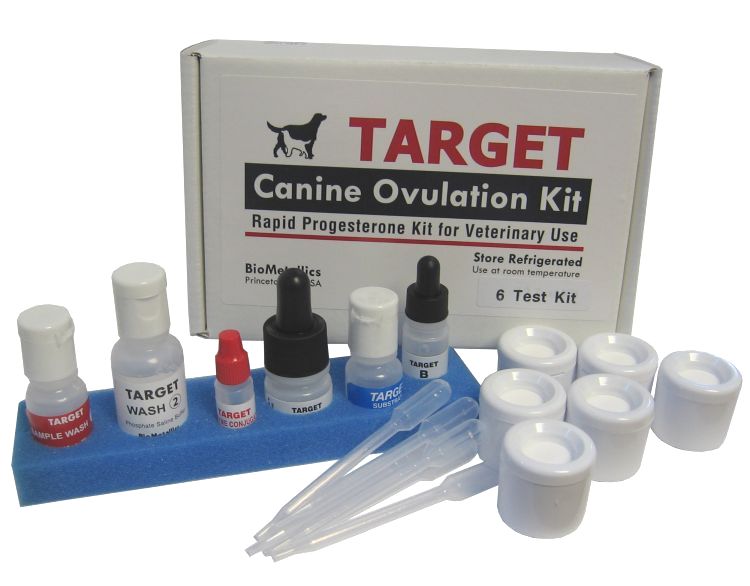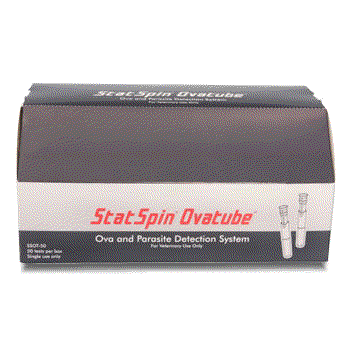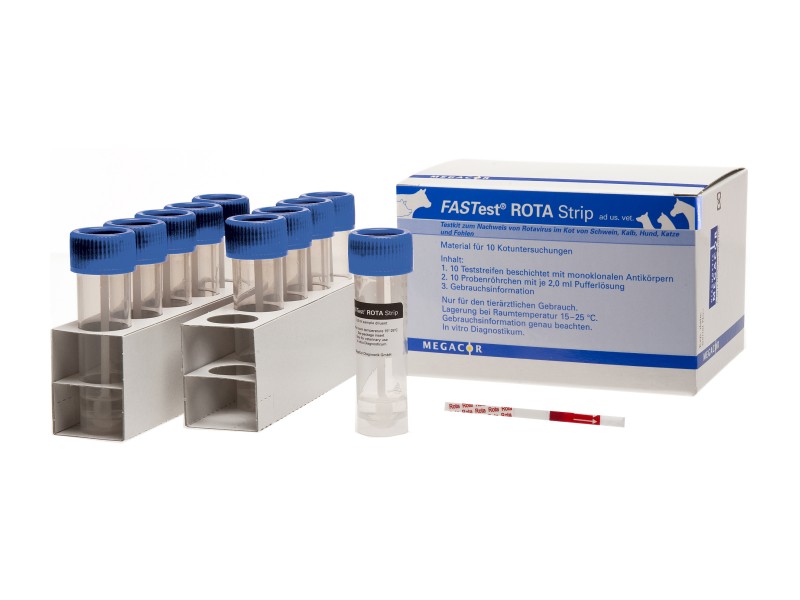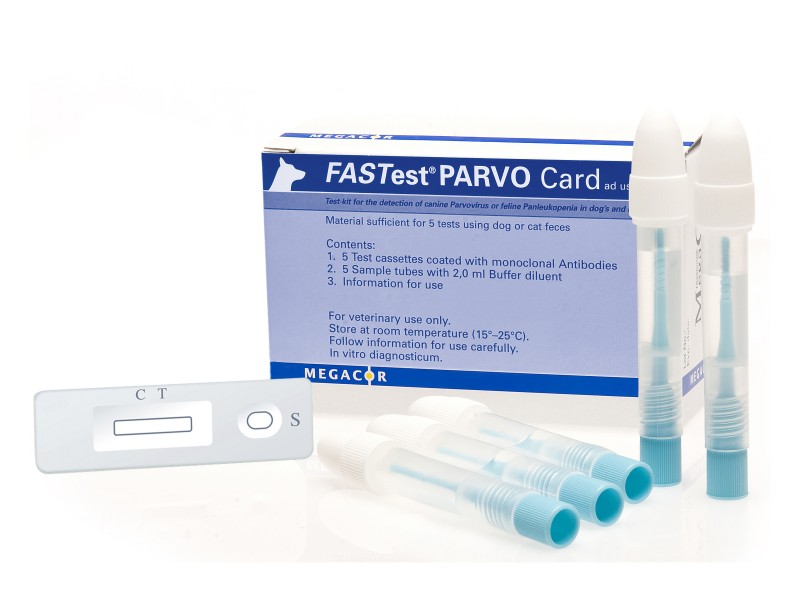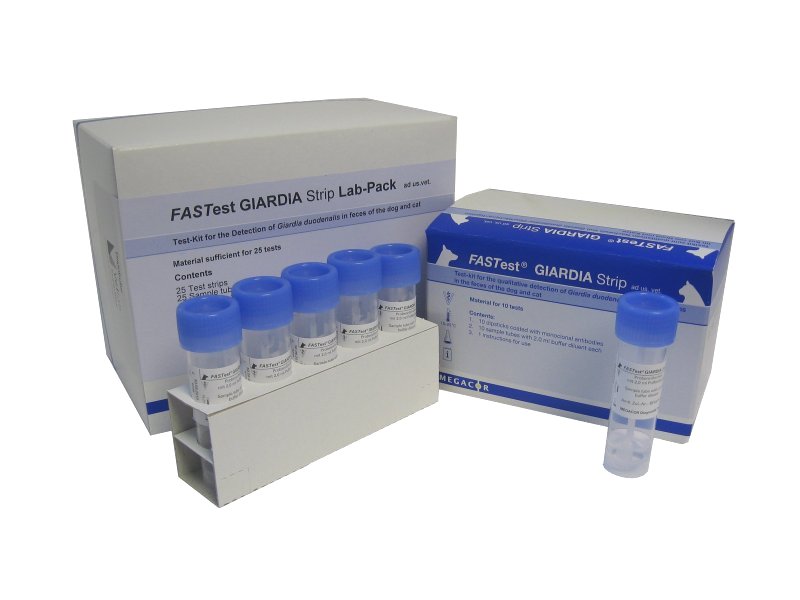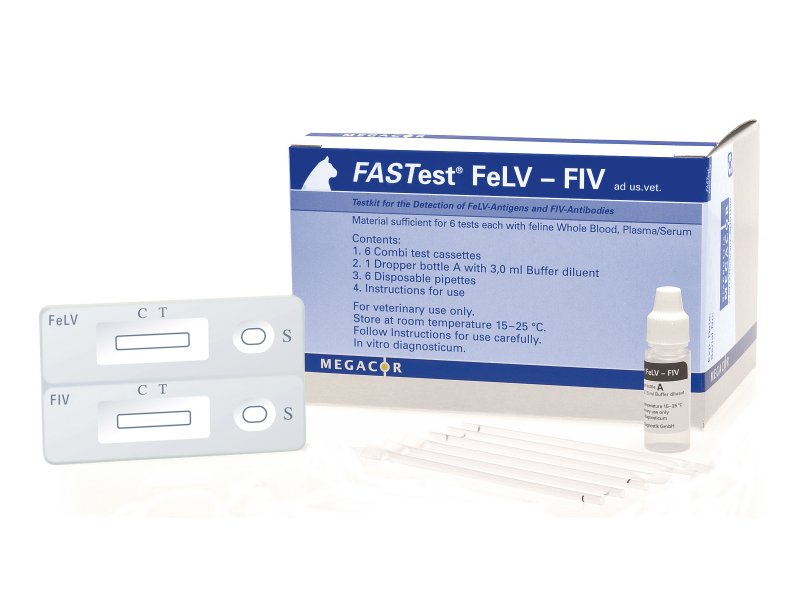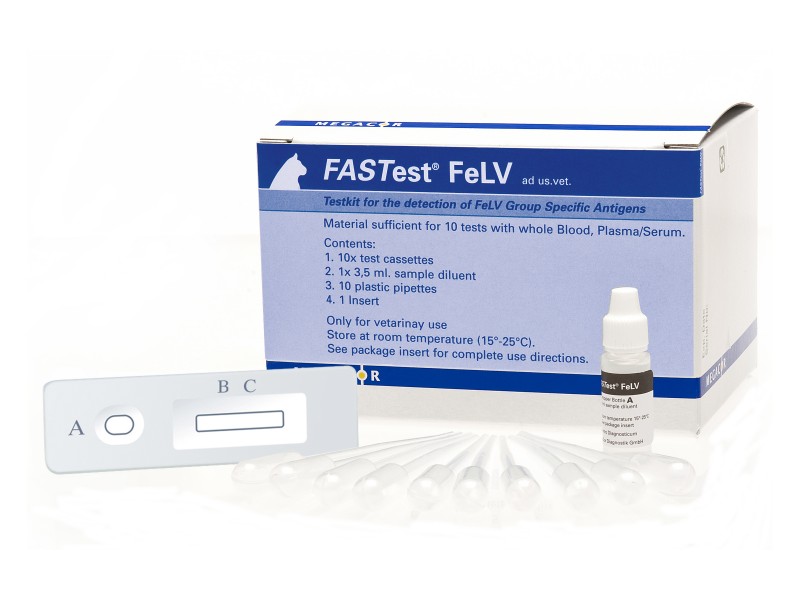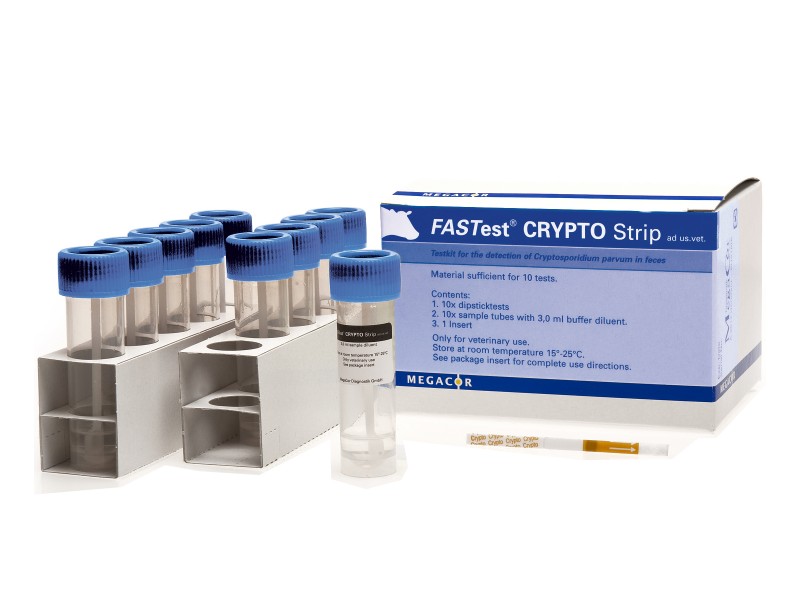Vet Diagnostic Kits
We have been selling and specialising in Veterinary Diagnostic Test Kits for over 30 years and have a wealth of knowledge and experience in this field. We are proud to be the exclusive UK distributor for MegaCor Diagnostik FASTest kits.
MegaCor Diagnostik GmbH – MegaCor Diagnostik is based in Austria where their products are manufactured and supported by their own research and development laboratories. MegaCor Diagnostik GmbH was established in 1988 and has continued to successfully research and develop innovative rapid laboratory test kits for the veterinary diagnostic marketplace.
MegaCor FASTest Kits – Most of these test kits work on the immunochromatographic/lateral flow principle. The test kits are stored at room temperature and have a long shelf life. The test kits are reliable, accurate and very simple to use. FASTest veterinary diagnostic test kits are available from us directly or through your wholesaler.
Vetlab Supplies Laboratory Diagnostic Support Service – We supply FASTest Diagnostic Test Kits to Veterinary Practices, Commercial Laboratories, Veterinary Colleges, Universities and Charities with many of the MegaCor FASTest range of products. We also have our own laboratory and offer a full and free-of-charge support service for all of our clients that use our veterinary diagnostic test kits.
veterinary test
Our best-selling vet lab diagnostic tests kits are on this page, to see the full range, follow the link below:
See The full range of Diagnostic Kits
TARGET Canine Ovulation Test Kit
TARGET Canine Ovulation Test Kit for the determination of the canine fertile period Read More
StatSpin OvaTube
Ova and parasite detection system, centrifugal accuracy without the mess Read More
FASTest RotavirusTest Kit
FASTest ROTA Strip is a non-refrigerated veterinary diagnostic test kit with up to 18 months shelf life Read More
FASTest Parvovirus Test Kit – Canine Parvovirus
FASTest Parvo Card veterinary diagnostic test kits are non-refrigerated with up to 18 months shelf life Read More
FASTest Giardia Test Kit
FASTest Giardia veterinary diagnostic test strips are non-refrigerated with up to 18 months shelf life Read More
FASTest FIV Single Test
FASTest FIV Single Veterinary Diagnostic Test Kits are non-refrigerated with up to 18 months shelf life Read More
FASTest FeLV-FIV Combination Test
FASTest FeLV-FIV Combination Test Kit detects FeLV antigen and FIV antibody in cat blood Read More
FASTest FeLV Single Test
FASTest FeLV Single Veterinary Diagnostic Test kits are non-refrigerated with up to 18 months shelf life Read More
FASTest CRYPTO Strip – Cryptosporidium
FASTest CRYPTO Strip is non-refrigerated with up to 18 months shelf life Read More


